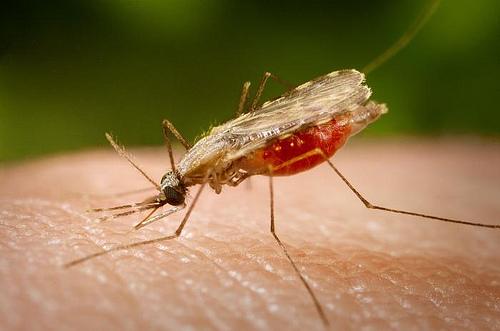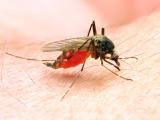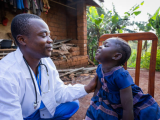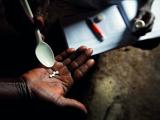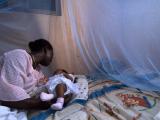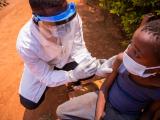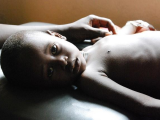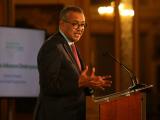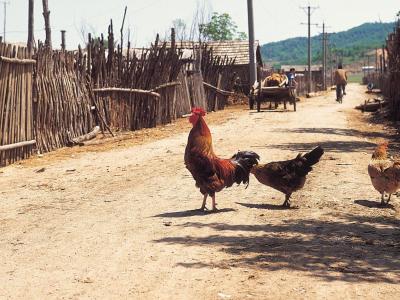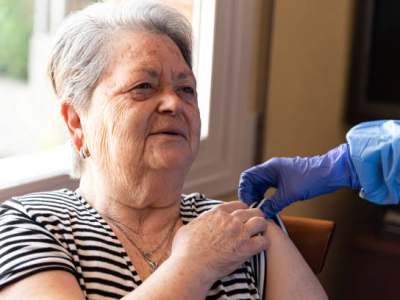World Health Organization (WHO) experts today urged further trials of GSK's candidate malaria vaccine on the heels of a New England Journal of Medicine (NEJM) study showing that its low efficacy in young children is likely due to a mismatch with the strains of malaria parasite commonly found in Africa.
Results of phase 3 trials involving 15,000 kids published in April showed that four doses of the RTS,S candidate vaccine (Mosquirix)—the world's first to be tested in humans—had just 36% effectiveness in children 5 to 17 months of age and 26% in infants.
Experts lobby for pilot projects
The WHO's Strategic Advisory Group of Experts on Immunization (SAGE) recommended that three to five large pilot trials of the RTS,S vaccine be initiated in young African children to better plan a strategy for its use, the WHO said in a press release today. SAGE members met Oct 20 through yesterday with the Malaria Policy Advisory Committee (MPAC) at WHO headquarters in Geneva.
"This was a historic meeting with two of WHO's major advisory committees working together to consider current evidence about this vaccine," said Fred Binka, MBChB, MPH, PhD, acting chair of MPAC. "The committees agreed that pilot implementations should be the next step with this vaccine."
The pilot trials would involve the older group of children—those 5 to 17 months. The experts—whose combined group is called the Joint Technical Expert Group (JTEG)—did not recommend use of the vaccine in infants.
One challenge of implementing the vaccine is whether immunization successes in the phase 3 trials could be replicated in real-life situations because of the four-dose regimen that would require multiple healthcare visits, the experts noted in their recommendations. They also said the vaccine's effect on death rates could not be determined from the phase 3 trial, and that the most concerning adverse events—meningitis and cerebral malaria—warrant further exploration.
SAGE chairman Jon S. Abramson, MD, said the RTS,S vaccine was likely to cost about $5 a dose, or $20 for the full course, Reuters reported today.
JTEG members said in their recap that each pilot site would likely involve hundreds of thousands of young children. They added that the WHO should oversee the design and implementation of the pilot studies.
Study shows strain mismatch
In the NEJM study, an international team of researchers found that a mismatch with circulating strains of Plasmodium falciparum in Africa likely led to the low effectiveness numbers in the phase 3 trial whose results were published in April.
They studied 4,577 children who received the RTS,S vaccine and 2,335 age-matched controls who did not in the phase 3 trial. The researchers compared infections in which the parasite matched the genetic makeup of the vaccine with those in which it didn't.
The vaccine was designed years ago to target the circumsporozoite (CS) protein found on the surface of Plasmodium parasites. Of the 2,090 malaria infections noted in this week's study, however, only 139 of them (6.7%) involved parasites with a CS protein that matched the vaccine's; in the other 1,951 infections there was a mismatch.
Using a hazard ratio, the investigators found a vaccine efficacy of 62.7% against matched infections and 54.2% against mismatched infections in kids 5 to 17 months old. There was no statistical difference in vaccine efficacy between matched and mismatched infections in the infants.
Previous studies that assessed the genetic variations in the CS protein did not find that a mismatch reduced vaccine efficacy, according to a press release from the National Institutes of Health, which funded the study. The new study, though, included a larger sample size and used more advanced and sensitive genomic sequencing technology.
In an accompanying NEJM editorial, Christopher Plowe, MD, MPH, said the vaccine still has a role in malaria-control efforts in Africa, though efforts should be made to improve it.
Plowe is with the Institute for Global Health and Howard Hughes Medical Institute at the University of Maryland School of Medicine in Baltimore. He said the mismatch effect is magnified because the RTS,S vaccine starts with 50% to 60% efficacy at best, its efficacy is lower in younger children, and protection wanes over time.
But the vaccine is better than no vaccine, he adds, and the study also illustrates that the vaccine offers some measure of cross-protection even when strains don't closely match.
"The most prudent course," he writes, "may be to use RTS,S/AS01 in the specific populations that will benefit most, while redoubling efforts to improve this pioneering vaccine on the basis of new understanding provided by this study of the strain-specific basis of its partial efficacy."
See also:
Oct 21 NEJM study
Apr 24 CIDRAP News story, "First malaria vaccine shows promise despite efficacy drop-off"
Oct 23 WHO press release
Oct 22 JTEG assessment and recommendations
Oct 23 Reuters story
Oct 22 NIH news release
Oct 21 NEJM editorial
